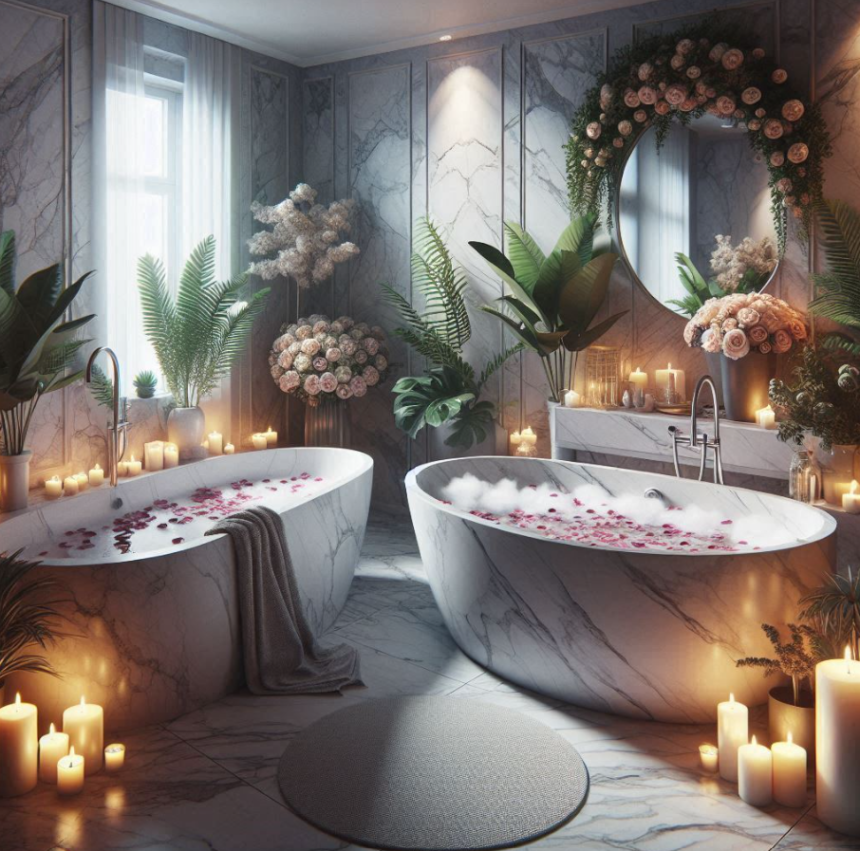Freestanding bathtubs have surged in popularity, transforming bathrooms into serene retreats and stylish spaces. Unlike traditional alcove tubs, these standalone fixtures offer versatility in design and function. Whether you’re renovating an existing bathroom or designing a new one, incorporating a freestanding bathtub can enhance both space and aesthetics. In this article, we’ll explore the benefits, design options, and tips for maximizing space and style with freestanding bathtubs.
The Appeal of Freestanding Bathtubs
1. Aesthetic Versatility
Freestanding bathtubs come in a variety of shapes, sizes, and materials, making them a versatile choice for different design aesthetics. From modern and minimalist to vintage and ornate, there’s a freestanding tub to complement any style. The elegant silhouette of these tubs serves as a striking centerpiece, drawing the eye and elevating the overall decor of the bathroom.
2. Space Optimization
While it might seem counterintuitive, freestanding tubs can actually optimize space in a bathroom. By not being constrained to walls, they can be placed in areas that make the best use of available square footage. This flexibility allows for creative layouts that can make a small bathroom feel larger and more open.
3. Easy Installation
Freestanding bathtubs typically require less extensive plumbing work compared to built-in tubs. Many models come with their own drain systems, allowing for easier installation. This can be a significant advantage in renovations, saving both time and money.
Design Considerations
1. Choosing the Right Material
Freestanding bathtubs are available in various materials, each with its own benefits:
- Acrylic: Lightweight and available in many shapes, acrylic tubs are easy to install and maintain. They retain heat well, making for a cozy bathing experience.
- Cast Iron: Known for its durability and heat retention, cast iron offers a classic look. However, it can be quite heavy, necessitating reinforced flooring.
- Stone Resin: This material provides a luxurious look and feel, often resembling natural stone. It’s sturdy and retains heat effectively but can be pricier.
- Fiberglass: An economical choice, fiberglass tubs are lightweight and easy to install but may not offer the same durability or heat retention as other materials.
2. Shape and Size
Freestanding bathtubs come in various shapes, including oval, rectangular, and even asymmetric designs. When selecting the shape, consider the overall dimensions of your bathroom. A larger tub can create a spa-like atmosphere, while a compact model can fit snugly in smaller spaces without overwhelming the room.
3. Faucet Placement
One of the unique aspects of freestanding tubs is the freedom to choose where the faucet is placed. Options include wall-mounted faucets, floor-mounted faucets, or even a freestanding floor tap. Each option creates a different aesthetic, so select one that enhances the overall design of your bathroom.
Maximizing Space
1. Strategic Placement
Freestanding bathtubs can be placed in unconventional spots, such as in front of a window, near a fireplace, or even in a corner. This allows for the creation of a focal point in the room and can make the space feel more open and inviting.
2. Incorporating Surrounding Elements
To maximize the impact of your freestanding tub, consider the surrounding decor. Floating shelves, built-in cabinetry, or even a nearby plant can create a harmonious environment. Adding a small stool or side table next to the tub provides convenience for bath essentials and enhances the overall aesthetic.
3. Lighting and Mirrors
Good lighting is crucial in a bathroom. Consider installing pendant lights or sconces to highlight the freestanding tub. Additionally, mirrors can create the illusion of more space. A large mirror positioned opposite the tub can reflect light and make the area feel larger and brighter.
Style Tips
1. Complementing the Color Palette
When selecting a freestanding bathtub, consider how it fits into your bathroom’s color scheme. A white tub can provide a classic look, while bold colors or unique finishes can serve as a statement piece. Choose complementary colors for surrounding decor and accessories to create a cohesive look.
2. Accessorizing Thoughtfully
Accessories can enhance the elegance of a freestanding bathtub. Consider adding plush towels, a stylish bath mat, or decorative trays for bath products. These elements not only add style but also provide practical storage solutions without cluttering the space.
3. Incorporating Natural Elements
To create a spa-like atmosphere, consider integrating natural elements such as plants, stones, or wood accents. A potted plant near the tub or a wooden bath tray can add warmth and tranquility to the space.
Maintaining Your Freestanding Tub
To keep your freestanding bathtub looking its best, regular maintenance is essential. Here are a few tips:
- Clean Regularly: Use non-abrasive cleaners to avoid scratching the surface. Rinse thoroughly to remove any residue.
- Check for Leaks: Regularly inspect the plumbing for any signs of leaks or drips. Early detection can prevent more significant issues.
- Use a Bath Mat: Placing a mat underneath the tub can prevent water damage to flooring and make cleanup easier.
Conclusion
Freestanding bathtubs offer a unique blend of style and functionality that can enhance any bathroom. By thoughtfully considering design elements, material choices, and placement, you can create a serene space that maximizes both style and practicality. Whether you’re looking for a bold statement piece or a tranquil retreat, a freestanding bathtub can be the perfect addition to elevate your bathroom experience. With the right approach, your bathroom can become a sanctuary of relaxation and beauty, making every bath an indulgent escape.







